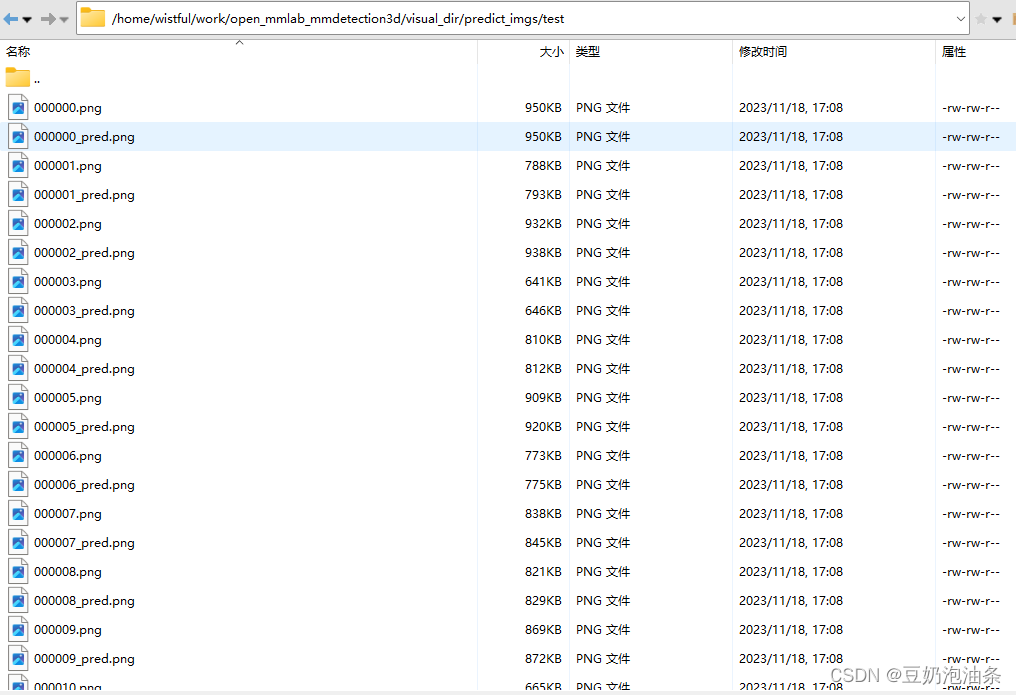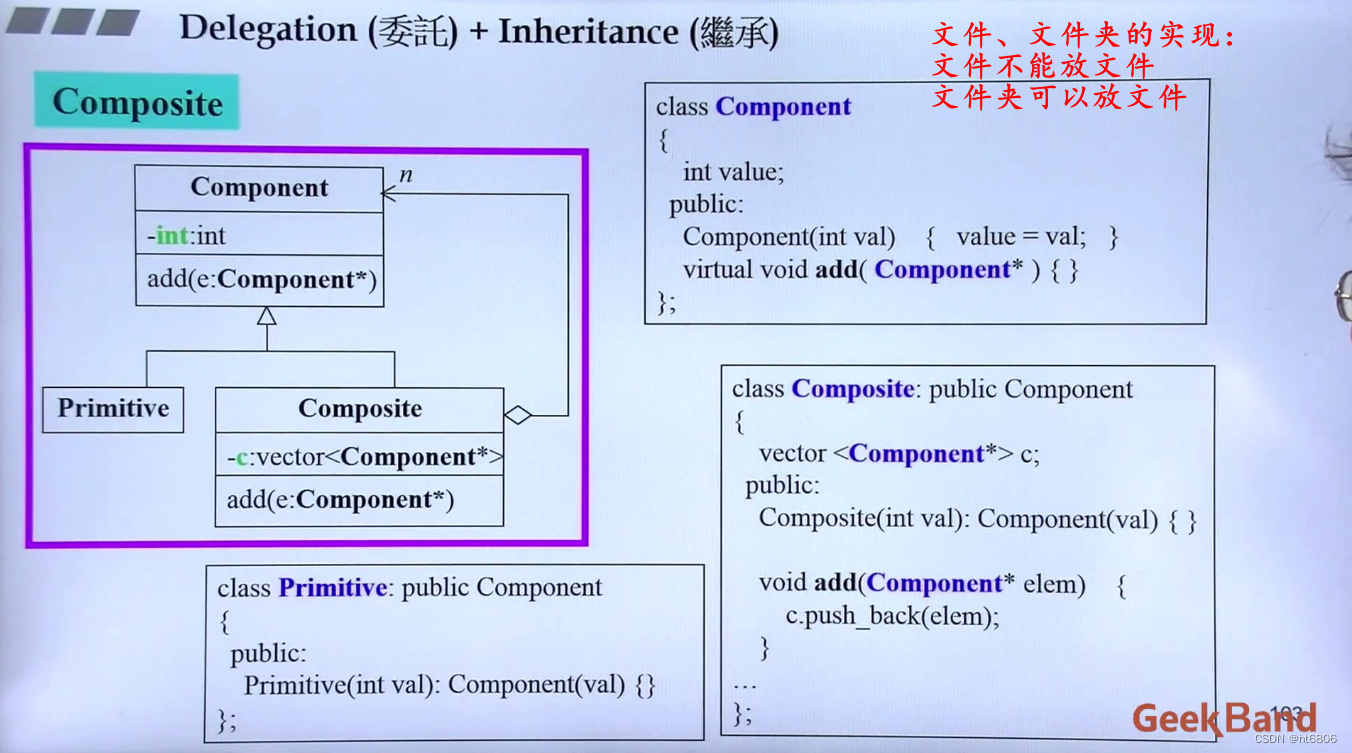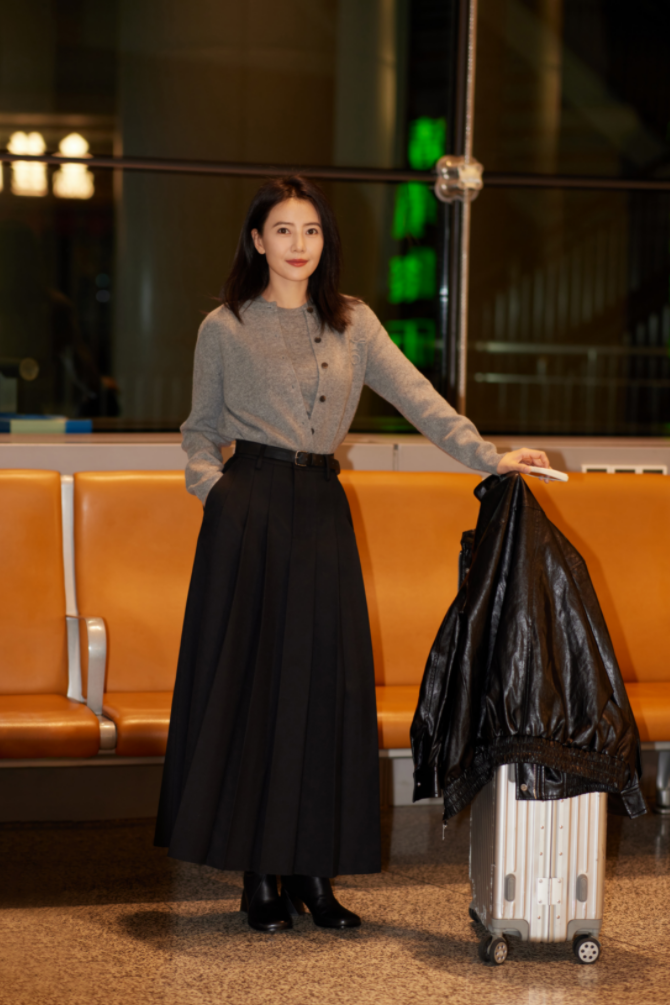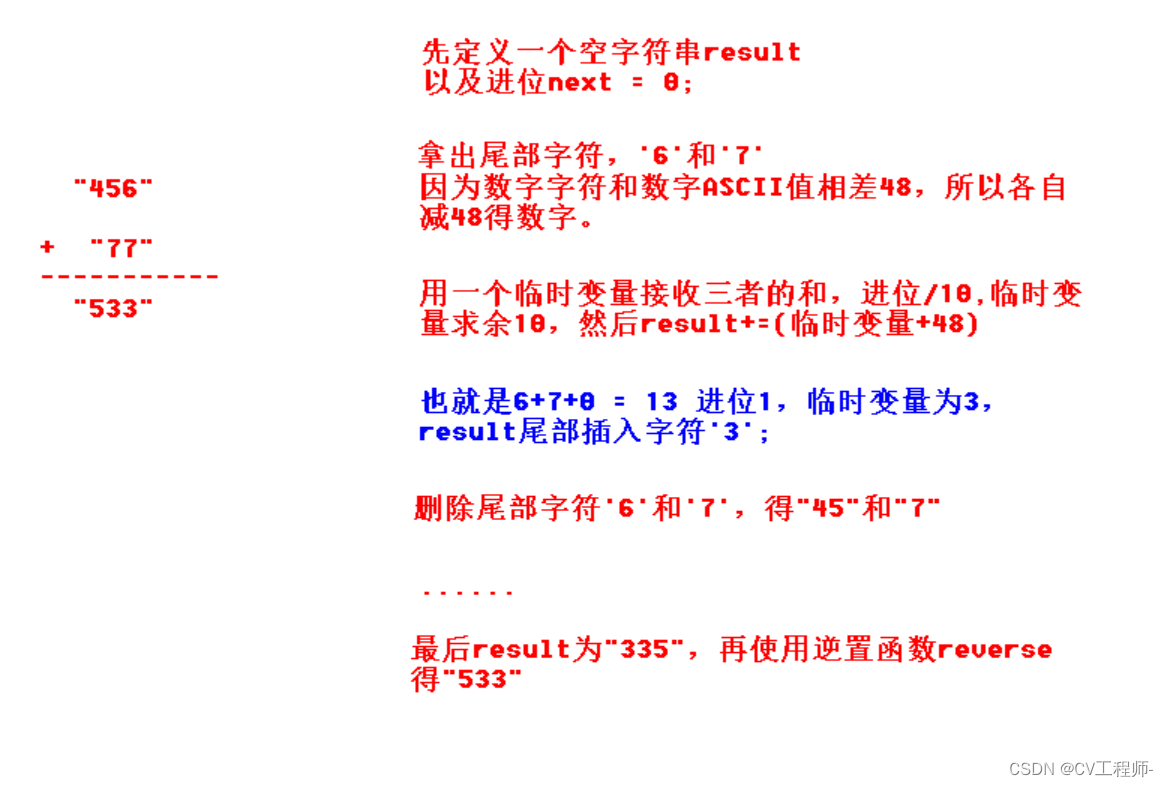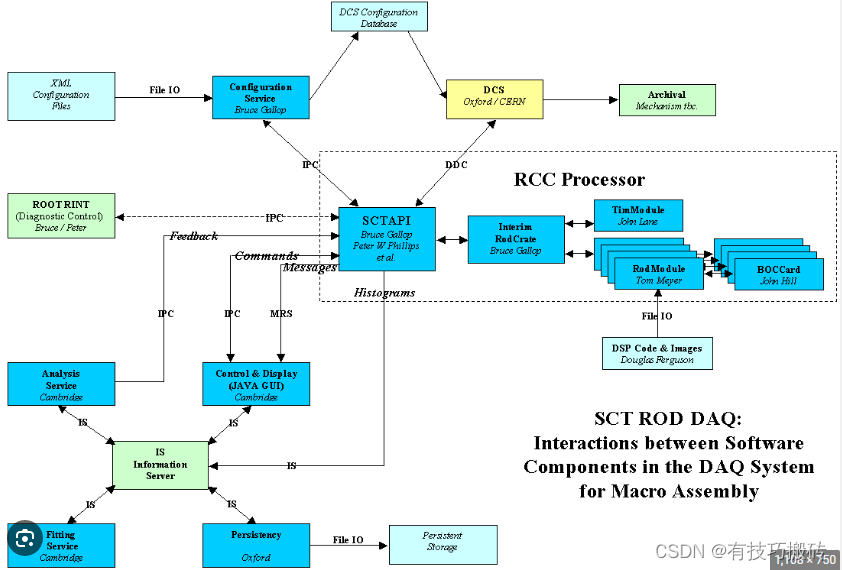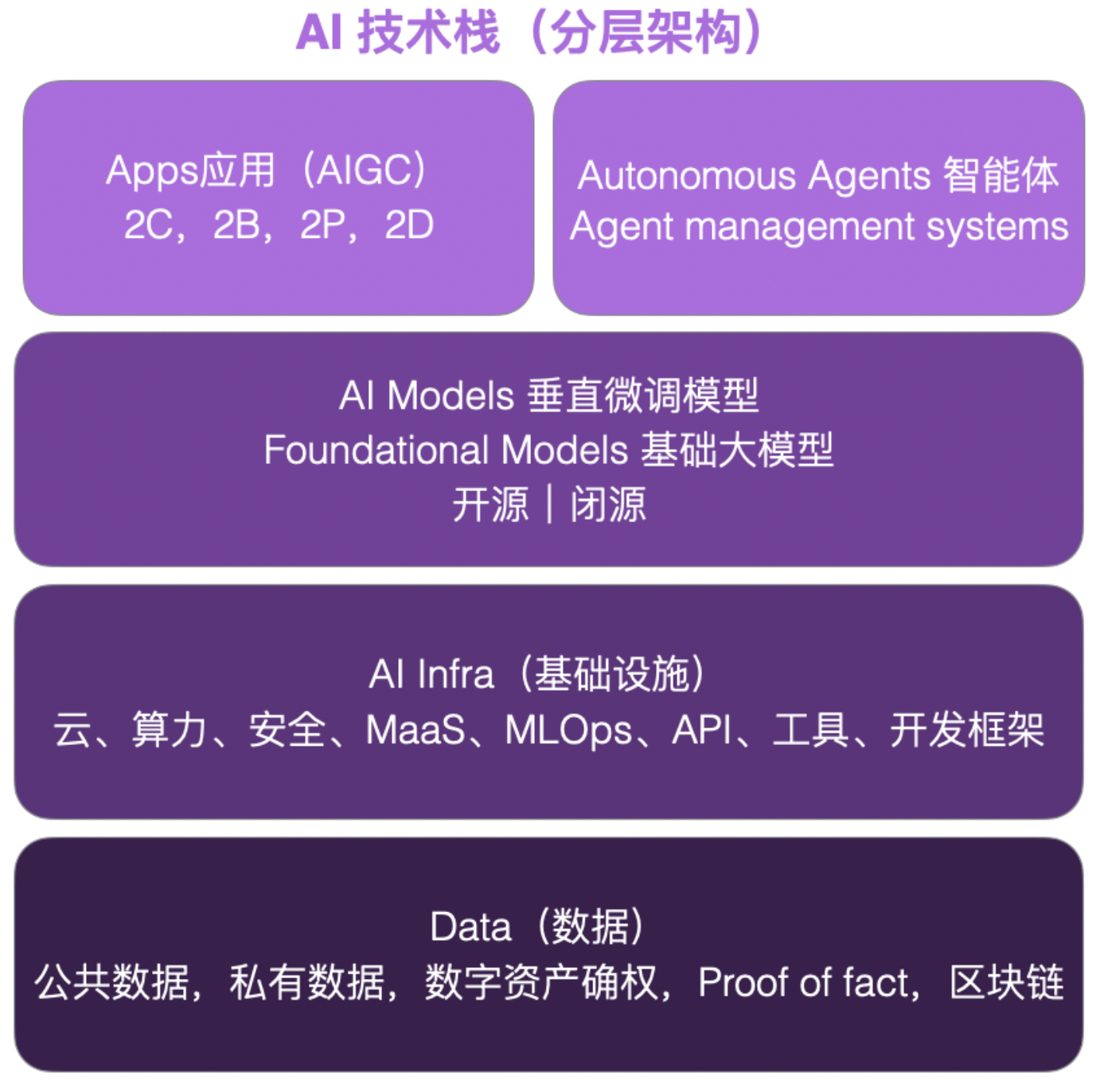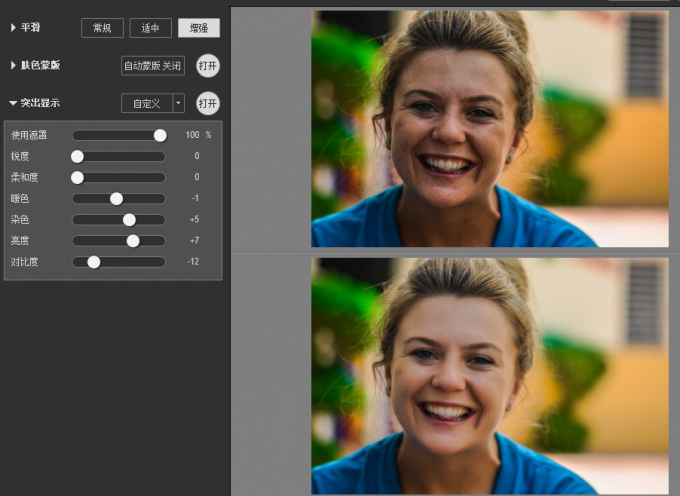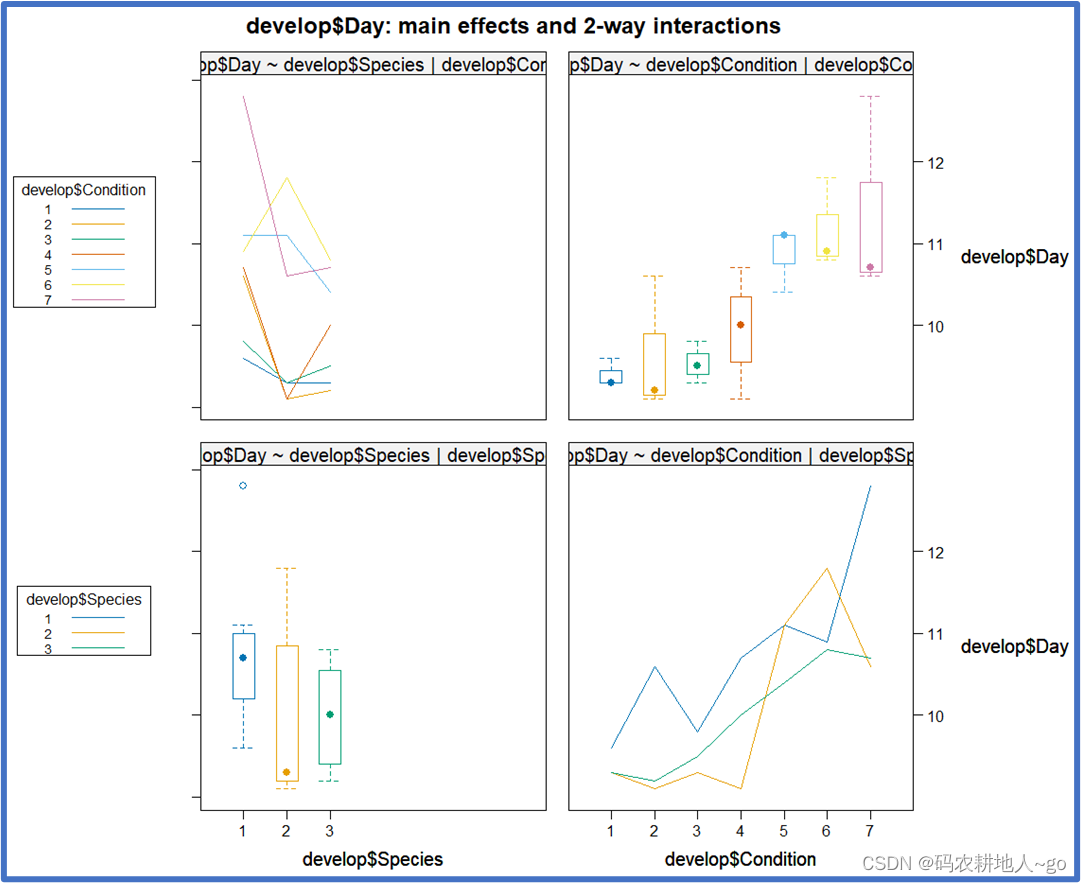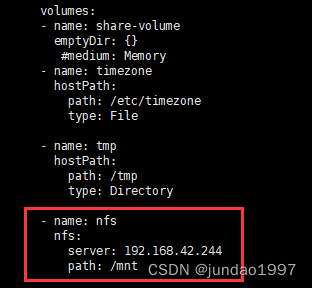环境信息
使用 python mmdet3d/utils/collect_env.py收集环境信息
sys.platform: linux
Python: 3.7.12 | packaged by conda-forge | (default, Oct 26 2021, 06:08:21) [GCC 9.4.0]
CUDA available: True
numpy_random_seed: 2147483648
GPU 0,1: NVIDIA GeForce RTX 3090
CUDA_HOME: /usr/local/cuda
NVCC: Cuda compilation tools, release 11.3, V11.3.109
GCC: gcc (Ubuntu 7.5.0-6ubuntu2) 7.5.0
PyTorch: 1.8.1+cu111
PyTorch compiling details: PyTorch built with:- GCC 7.3- C++ Version: 201402- Intel(R) Math Kernel Library Version 2020.0.0 Product Build 20191122 for Intel(R) 64 architecture applications- Intel(R) MKL-DNN v1.7.0 (Git Hash 7aed236906b1f7a05c0917e5257a1af05e9ff683)- OpenMP 201511 (a.k.a. OpenMP 4.5)- NNPACK is enabled- CPU capability usage: AVX2- CUDA Runtime 11.1- NVCC architecture flags: -gencode;arch=compute_37,code=sm_37;-gencode;arch=compute_50,code=sm_50;-gencode;arch=compute_60,code=sm_60;-gencode;arch=compute_70,code=sm_70;-gencode;arch=compute_75,code=sm_75;-gencode;arch=compute_80,code=sm_80;-gencode;arch=compute_86,code=sm_86- CuDNN 8.0.5- Magma 2.5.2- Build settings: BLAS_INFO=mkl, BUILD_TYPE=Release, CUDA_VERSION=11.1, CUDNN_VERSION=8.0.5, CXX_COMPILER=/opt/rh/devtoolset-7/root/usr/bin/c++, CXX_FLAGS= -Wno-deprecated -fvisibility-inlines-hidden -DUSE_PTHREADPOOL -fopenmp -DNDEBUG -DUSE_KINETO -DUSE_FBGEMM -DUSE_QNNPACK -DUSE_PYTORCH_QNNPACK -DUSE_XNNPACK -O2 -fPIC -Wno-narrowing -Wall -Wextra -Werror=return-type -Wno-missing-field-initializers -Wno-type-limits -Wno-array-bounds -Wno-unknown-pragmas -Wno-sign-compare -Wno-unused-parameter -Wno-unused-variable -Wno-unused-function -Wno-unused-result -Wno-unused-local-typedefs -Wno-strict-overflow -Wno-strict-aliasing -Wno-error=deprecated-declarations -Wno-stringop-overflow -Wno-psabi -Wno-error=pedantic -Wno-error=redundant-decls -Wno-error=old-style-cast -fdiagnostics-color=always -faligned-new -Wno-unused-but-set-variable -Wno-maybe-uninitialized -fno-math-errno -fno-trapping-math -Werror=format -Wno-stringop-overflow, LAPACK_INFO=mkl, PERF_WITH_AVX=1, PERF_WITH_AVX2=1, PERF_WITH_AVX512=1, TORCH_VERSION=1.8.1, USE_CUDA=ON, USE_CUDNN=ON, USE_EXCEPTION_PTR=1, USE_GFLAGS=OFF, USE_GLOG=OFF, USE_MKL=ON, USE_MKLDNN=ON, USE_MPI=OFF, USE_NCCL=ON, USE_NNPACK=ON, USE_OPENMP=ON, TorchVision: 0.9.1+cu111
OpenCV: 4.6.0
MMEngine: 0.9.1
MMDetection: 3.2.0
MMDetection3D: 1.3.0+9d3e162
spconv2.0: True以前写过mmdetection3d中的可视化,但mmdetection3d更新后代码已经不适用了,正好我把我的工作全转移到新版mmdetection3d上来了,因此重新写了一下推理结果可视化。整体思路还是构建模型、构建数据、推理、绘制,下面分步讲解
1、构建模型
我用jupyter实现,首先需要确保jupyter的工作路径在mmdetection3d的工作路径下,不然会存在找不到mmdet3d的问题
import sys
import os
import torch
import cv2
import numpy as np# 添加工作路径,不然找不到mmdet3d
os.chdir('/home/wistful/work/open_mmlab_mmdetection3d')
sys.path.append('/home/wistful/work/open_mmlab_mmdetection3d')# load config
config_file = 'configs/point_cls_voxel/pointpillars_hv_secfpn_8x2-160e_kitti-3d-3class.py'
checkpoint_file = '/home/wistful/work/open_mmlab_mmdetection3d/work_dirs/pointpillars_hv_secfpn_8x2-160e_kitti-3d-3class/epoch_80.pth'# 构建模型
from mmdet3d.apis import init_model, inference_detector
device = 'cuda:0'
model = init_model(config_file, checkpoint=checkpoint_file, device=device)至此模型已经构建,下一步是构建数据,送入模型以获取推理结果
2、构建数据
新版mmdet3d的模型输入分为两个部分batch_inputs_dict, batch_data_samples。batch_inputs_dict包含了模型推理所需的数据(点云、图像),batch_data_samples包含了训练时需要的bbox等信息。因此,需要构建batch_inputs_dict,我写了一个简单的函数,可以调用
build_dataloader.py文件:
from mmdet3d.registry import DATASETS
from tools.misc.browse_dataset import build_data_cfg
from mmengine.registry import init_default_scopedef load_datasets(config_file, aug=False, set='train'):"""Args:config_file: 配置文件路径aug:是否数据增强(待测试)set:要读取的数据集,'train','test','val'Returns:"""cfg = build_data_cfg(config_file, aug=aug, cfg_options=None)init_default_scope(cfg.get('default_scope', 'mmdet3d'))# 选择需要读取的数据集if set == 'train':dataloader = cfg.train_dataloader.datasetelif set == 'val':dataloader = cfg.val_dataloader.datasetelif set == 'test':dataloader = cfg.test_dataloader.datasetreturn DATASETS.build(dataloader)def build_batch_dict(datasets, batch_size, device, images=False):"""Args:device: 指定设备datasets: 传入数据集batch_size: 批次大小images: 加入图像Returns:"""# TODO: 编写加入图像的代码points = []images = []batch_data_samples = []for i in range(batch_size):# 确保在同一个device上points.append(datasets[i]['inputs']['points'].to(device))data_samples = datasets[i]['data_samples']# if data_samples.gt_instances_3dif len(data_samples.gt_instances_3d.keys()) != 0:data_samples.gt_instances_3d.bboxes_3d = data_samples.gt_instances_3d.bboxes_3d.to(device)data_samples.gt_instances_3d.labels_3d = data_samples.gt_instances_3d.labels_3d.to(device)batch_inputs_dict = dict()batch_inputs_dict['points'] = points# batch_data_samples = data_samplesreturn batch_inputs_dict, batch_data_samplesdef cyclic_load_data_item(datasets, index, device, images=False):"""Args:device: 指定设备datasets: 传入数据集index: 索引images: 加入图像Returns:单条数据,适用于循环遍历整个数据集"""# TODO: 编写加入图像的代码points = []images = []points.append(datasets[index]['inputs']['points'].to(device))batch_inputs_dict = dict()batch_inputs_dict['points'] = pointsdata_samples = datasets[index]['data_samples']if len(data_samples.gt_instances_3d.keys()) !=0:data_samples.gt_instances_3d.bboxes_3d = data_samples.gt_instances_3d.bboxes_3d.to(device)data_samples.gt_instances_3d.labels_3d = data_samples.gt_instances_3d.labels_3d.to(device)batch_data_samples = [data_samples]return batch_inputs_dict, batch_data_samples下面利用这个函数,实现构建数据集
# 构建数据集
from custom_API.build_dataloader import load_datasets # 我放在了custom_API路径下,如何导入取决于读者如何存放set = 'test'# set字段表示构建的数据集
datasets = load_datasets(dataset_config, aug=False, set=set) # aug字段表示不使用数据增强
至此,datasets为一个列表,长度就是数据集的总样本数。eg:datasets[0]里面就包含了第1个样本的全部信息,下面可以看一下输出
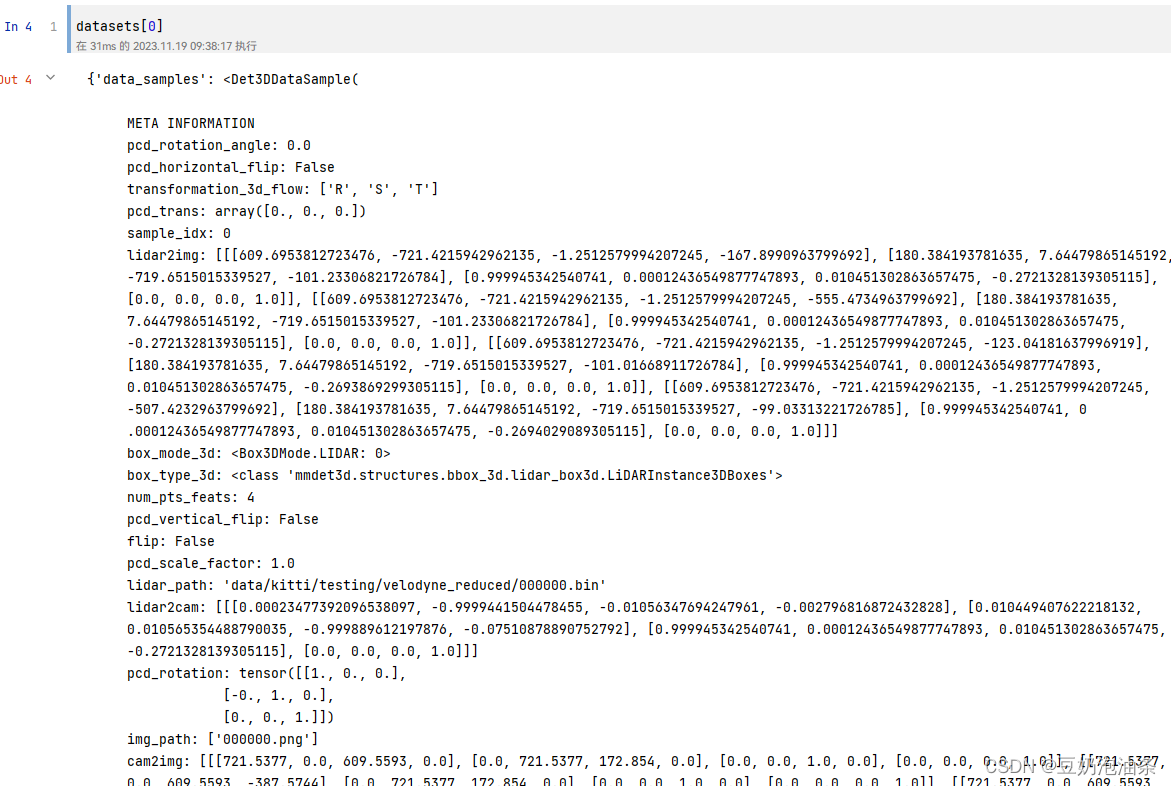
3、推理与绘制
我们已经得到了整个数据集,那么我们就可以使用数据集中的任意一条数据进行推理,根据这个思路,我们也能很方便的推理完整个数据集。绘制部分的代码我使用的是旧版mmdetection3d中的代码,下面是代码:
# draw_box.py
import osfrom custom_API.draw_utils import draw_lidar_bbox3d_on_img, draw_depth_bbox3d_on_img, draw_camera_bbox3d_on_img
import mmcv
from os import path as osp
import numpy as npdef show_multi_modality_result(img,gt_bboxes,pred_bboxes,batch_data_samples,out_dir,filename,type='train',box_mode='lidar',img_metas=None,show=False,gt_bbox_color=(61, 102, 255),pred_bbox_color=(241, 101, 72)):"""Convert multi-modality detection results into 2D results.将3D边框投影到2D图像平面并且可视化Project the predicted 3D bbox to 2D image plane and visualize them.Args:img (np.ndarray): The numpy array of image in cv2 fashion.gt_bboxes (:obj:`BaseInstance3DBoxes`): Ground truth boxes.pred_bboxes (:obj:`BaseInstance3DBoxes`): Predicted boxes.proj_mat (numpy.array, shape=[4, 4]): The projection matrix # 投影矩阵according to the camera intrinsic parameters.out_dir (str): Path of output directory.filename (str): Filename of the current frame.box_mode (str, optional): Coordinate system the boxes are in.Should be one of 'depth', 'lidar' and 'camera'.Defaults to 'lidar'.img_metas (dict, optional): Used in projecting depth bbox.Defaults to None.show (bool, optional): Visualize the results online. Defaults to False.颜色为B G R,不是RGB!!!gt_bbox_color (str or tuple(int), optional): Color of bbox lines.The tuple of color should be in BGR order. Default: (255, 102, 61).pred_bbox_color (str or tuple(int), optional): Color of bbox lines.The tuple of color should be in BGR order. Default: (72, 101, 241)."""# 根据传入3D框所处的坐标系调用对应的投影方法,获取投影框if box_mode == 'depth':draw_bbox = draw_depth_bbox3d_on_imgelif box_mode == 'lidar':draw_bbox = draw_lidar_bbox3d_on_imgelif box_mode == 'camera':draw_bbox = draw_camera_bbox3d_on_imgelse:raise NotImplementedError(f'unsupported box mode {box_mode}')# 在out_dir下创建每个文件名字的文件夹# result_path = osp.join(out_dir, filename)# mmcv.mkdir_or_exist(result_path)out_dir = out_dir + type + '/'# 判断目录是否存在if not os.path.exists(out_dir):os.makedirs(out_dir)else:pass# os.makedirs(out_dir)# mmcv.mkdir_or_exist(result_path)# if score_thr > 0:# inds = pred_scores > score_thr# pred_bboxes = pred_bboxes[inds]# 获取投影矩阵proj_mat = batch_data_samples[0].lidar2imgproj_mat = proj_mat[0]proj_mat = np.array(proj_mat)if show:show_img = img.copy()if gt_bboxes is not None:show_img = draw_bbox(gt_bboxes, show_img, proj_mat, img_metas, color=gt_bbox_color)if pred_bboxes is not None:show_img = draw_bbox(pred_bboxes,show_img,proj_mat,img_metas,color=pred_bbox_color)mmcv.imshow(show_img, win_name='project_bbox3d_img', wait_time=0)if img is not None:# print('写入原图像')mmcv.imwrite(img, osp.join(out_dir, f'{filename}.png'))if gt_bboxes is not None:# 写入地面真相gt_img = draw_bbox(gt_bboxes, img, proj_mat, img_metas, color=gt_bbox_color)mmcv.imwrite(gt_img, osp.join(out_dir, f'{filename}_gt.png'))if pred_bboxes is not None:pred_img = draw_bbox(pred_bboxes, img, proj_mat, img_metas, color=pred_bbox_color)mmcv.imwrite(pred_img, osp.join(out_dir, f'{filename}_pred.png'))if pred_bboxes is not None and gt_bboxes is not None:# print('draw_gt_bbox')gt_img = draw_bbox(gt_bboxes, img, proj_mat, img_metas, color=gt_bbox_color)gt_and_pred_img = draw_bbox(pred_bboxes, gt_img, proj_mat, img_metas, color=pred_bbox_color)mmcv.imwrite(gt_and_pred_img, osp.join(out_dir, f'{filename}_pred_gt.png'))# draw_utils.py
# Copyright (c) OpenMMLab. All rights reserved.
import copyimport cv2
import numpy as np
import torch
from matplotlib import pyplot as pltdef project_pts_on_img(points,raw_img,lidar2img_rt,max_distance=70,thickness=-1):"""Project the 3D points cloud on 2D image.Args:points (numpy.array): 3D points cloud (x, y, z) to visualize.raw_img (numpy.array): The numpy array of image.lidar2img_rt (numpy.array, shape=[4, 4]): The projection matrixaccording to the camera intrinsic parameters.max_distance (float, optional): the max distance of the points cloud.Default: 70.thickness (int, optional): The thickness of 2D points. Default: -1."""img = raw_img.copy()num_points = points.shape[0]pts_4d = np.concatenate([points[:, :3], np.ones((num_points, 1))], axis=-1)pts_2d = pts_4d @ lidar2img_rt.T# cam_points is Tensor of Nx4 whose last column is 1# transform camera coordinate to image coordinatepts_2d[:, 2] = np.clip(pts_2d[:, 2], a_min=1e-5, a_max=99999)pts_2d[:, 0] /= pts_2d[:, 2]pts_2d[:, 1] /= pts_2d[:, 2]fov_inds = ((pts_2d[:, 0] < img.shape[1])& (pts_2d[:, 0] >= 0)& (pts_2d[:, 1] < img.shape[0])& (pts_2d[:, 1] >= 0))imgfov_pts_2d = pts_2d[fov_inds, :3] # u, v, dcmap = plt.cm.get_cmap('hsv', 256)cmap = np.array([cmap(i) for i in range(256)])[:, :3] * 255for i in range(imgfov_pts_2d.shape[0]):depth = imgfov_pts_2d[i, 2]color = cmap[np.clip(int(max_distance * 10 / depth), 0, 255), :]cv2.circle(img,center=(int(np.round(imgfov_pts_2d[i, 0])),int(np.round(imgfov_pts_2d[i, 1]))),radius=1,color=tuple(color),thickness=thickness,)cv2.imshow('project_pts_img', img.astype(np.uint8))cv2.waitKey(0)def plot_rect3d_on_img(img,num_rects,rect_corners,color=(0, 255, 0),thickness=1):"""Plot the boundary lines of 3D rectangular on 2D images.Args:img (numpy.array): The numpy array of image.num_rects (int): Number of 3D rectangulars.rect_corners (numpy.array): Coordinates of the corners of 3Drectangulars. Should be in the shape of [num_rect, 8, 2].color (tuple[int], optional): The color to draw bboxes.Default: (0, 255, 0).thickness (int, optional): The thickness of bboxes. Default: 1."""line_indices = ((0, 1), (0, 3), (0, 4), (1, 2), (1, 5), (3, 2), (3, 7),(4, 5), (4, 7), (2, 6), (5, 6), (6, 7))# thickness = 0.5# print('rect_corners type:', rect_corners.dtype)# print('img type',type(img))for i in range(num_rects):corners = rect_corners[i].astype(np.int64)# print("opencv corners type:", corners.dtype)for start, end in line_indices:# cv2.line(img, (corners[start, 0], corners[start, 1]),# (corners[end, 0], corners[end, 1]), color, thickness,# cv2.LINE_AA)# print("change:", type(int(corners[start, 0])))cv2.line(img,tuple(corners[start]),tuple(corners[end]),color,thickness,cv2.LINE_AA)# cv2.line(img,# (int(corners[start, 0]), int(corners[start, 1])),# (int(corners[end, 0]), int(corners[end, 1])),# color,# thickness,# cv2.LINE_AA)# return img.astype(np.uint8)return imgdef draw_lidar_bbox3d_on_img(bboxes3d,raw_img,lidar2img_rt,img_metas,color=(0, 255, 0),thickness=1):"""Project the 3D bbox on 2D plane and draw on input image.Args:bboxes3d (:obj:`LiDARInstance3DBoxes`):3d bbox in lidar coordinate system to visualize.raw_img (numpy.array): The numpy array of image.lidar2img_rt (numpy.array, shape=[4, 4]): The projection matrixaccording to the camera intrinsic parameters.img_metas (dict): Useless here.color (tuple[int], optional): The color to draw bboxes.Default: (0, 255, 0).thickness (int, optional): The thickness of bboxes. Default: 1."""img = raw_img.copy()corners_3d = bboxes3d.corners.cpu().numpy()num_bbox = corners_3d.shape[0]pts_4d = np.concatenate([corners_3d.reshape(-1, 3),np.ones((num_bbox * 8, 1))], axis=-1)lidar2img_rt = copy.deepcopy(lidar2img_rt).reshape(4, 4)if isinstance(lidar2img_rt, torch.Tensor):lidar2img_rt = lidar2img_rt.cpu().numpy()pts_2d = pts_4d @ lidar2img_rt.Tpts_2d[:, 2] = np.clip(pts_2d[:, 2], a_min=1e-5, a_max=1e5)pts_2d[:, 0] /= pts_2d[:, 2]pts_2d[:, 1] /= pts_2d[:, 2]imgfov_pts_2d = pts_2d[..., :2].reshape(num_bbox, 8, 2)return plot_rect3d_on_img(img, num_bbox, imgfov_pts_2d, color, thickness)# TODO: remove third parameter in all functions here in favour of img_metas
def draw_depth_bbox3d_on_img(bboxes3d,raw_img,calibs,img_metas,color=(0, 255, 0),thickness=1):"""Project the 3D bbox on 2D plane and draw on input image.Args:bboxes3d (:obj:`DepthInstance3DBoxes`, shape=[M, 7]):3d bbox in depth coordinate system to visualize.raw_img (numpy.array): The numpy array of image.calibs (dict): Camera calibration information, Rt and K.img_metas (dict): Used in coordinates transformation.color (tuple[int], optional): The color to draw bboxes.Default: (0, 255, 0).thickness (int, optional): The thickness of bboxes. Default: 1."""from mmdet3d.structures import points_cam2imgfrom mmdet3d.models import apply_3d_transformationimg = raw_img.copy()img_metas = copy.deepcopy(img_metas)corners_3d = bboxes3d.cornersnum_bbox = corners_3d.shape[0]points_3d = corners_3d.reshape(-1, 3)# first reverse the data transformationsxyz_depth = apply_3d_transformation(points_3d, 'DEPTH', img_metas, reverse=True)# project to 2d to get image coords (uv)uv_origin = points_cam2img(xyz_depth,xyz_depth.new_tensor(img_metas['depth2img']))uv_origin = (uv_origin - 1).round()imgfov_pts_2d = uv_origin[..., :2].reshape(num_bbox, 8, 2).numpy()return plot_rect3d_on_img(img, num_bbox, imgfov_pts_2d, color, thickness)def draw_camera_bbox3d_on_img(bboxes3d,raw_img,cam2img,img_metas,color=(0, 255, 0),thickness=1):"""Project the 3D bbox on 2D plane and draw on input image.Args:bboxes3d (:obj:`CameraInstance3DBoxes`, shape=[M, 7]):3d bbox in camera coordinate system to visualize.raw_img (numpy.array): The numpy array of image.cam2img (dict): Camera intrinsic matrix,denoted as `K` in depth bbox coordinate system.img_metas (dict): Useless here.color (tuple[int], optional): The color to draw bboxes.Default: (0, 255, 0).thickness (int, optional): The thickness of bboxes. Default: 1."""from mmdet3d.structures import points_cam2imgimg = raw_img.copy()cam2img = copy.deepcopy(cam2img)corners_3d = bboxes3d.cornersnum_bbox = corners_3d.shape[0]points_3d = corners_3d.reshape(-1, 3)if not isinstance(cam2img, torch.Tensor):cam2img = torch.from_numpy(np.array(cam2img))assert (cam2img.shape == torch.Size([3, 3])or cam2img.shape == torch.Size([4, 4]))cam2img = cam2img.float().cpu()# project to 2d to get image coords (uv)uv_origin = points_cam2img(points_3d, cam2img)uv_origin = (uv_origin - 1).round()imgfov_pts_2d = uv_origin[..., :2].reshape(num_bbox, 8, 2).numpy()return plot_rect3d_on_img(img, num_bbox, imgfov_pts_2d, color, thickness)下面是推理和绘制的完整代码,必要的注释已经给出。
from custom_API.draw_box import show_multi_modality_result #如何导入取决于读者如何存放
print(f'datasets length:{len(datasets)}')
data_root = 'data/kitti/' # 数据集根路径
save_root = '/home/wistful/work/open_mmlab_mmdetection3d/visual_dir/predict_imgs/' # 保存可视化结果的根路径data_num = 100 # 最大不能超过数据集长度
# 判断一开始是读取的哪个数据集
if set == 'train' or set == 'val':new_set = 'training'
else:new_set = 'testing'
# 推理整个数据集的前data_num条数据
for i in tqdm(range(data_num), desc='process situation'):# cyclic_load_data_item代码位于第2步batch_inputs_dict, batch_data_samples = cyclic_load_data_item(datasets, index=i, device=device) # 读取一条数据,并构建批次points = batch_inputs_dict['points'][0] # 获取点云,因为是单条数据,所以直接取0# 获取检测结果result, data = inference_detector(model, points.cpu())bboxes_3d = result.pred_instances_3d.bboxes_3dlabels_3d = result.pred_instances_3d.labels_3dscores_3d = result.pred_instances_3d.scores_3d# 设置阈值thr = 0.4score = (scores_3d > thr)bboxes_3d = bboxes_3d[score] # 根据阈值筛选# 读取原始图像img_file_path = data_root + new_set + '/image_2/' + batch_data_samples[0].img_path[0]image = cv2.imread(img_file_path)img_name = batch_data_samples[0].img_path[0].split('.')[0] # 取一下文件名# 保存多模态结果(调用的旧版mmdet代码接口)show_multi_modality_result(img=image,box_mode='lidar',gt_bboxes=None,pred_bboxes=bboxes_3d,batch_data_samples=batch_data_samples,out_dir=save_root,filename=img_name,type=set,show=False)# result = model(batch_inputs_dict, batch_data_samples) # model的输入与具体模型有关
运行上述代码后,会在设置的save_root下生成可视化图片
